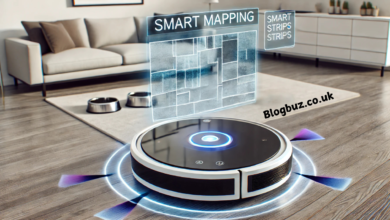What Are Machine Vision Systems?
A Deep Dive into the Technology Driving Automated Visual Inspection
In modern manufacturing and industrial environments, machine vision systems have emerged as essential tools for automating processes that were once solely reliant on human inspection. These systems enable machines to “see” and analyze objects with precision, speed, and consistency that humans cannot match. From detecting product defects to guiding robotic arms, machine vision systems are transforming production lines, quality assurance, and countless other applications.
But what exactly are machine vision systems? How do they work? And why are they so valuable across industries today? In this blog, we’ll break down everything you need to know about machine vision systems, their components, benefits, and practical applications.
What is a Machine Vision System?
A machine vision system is a technology that uses imaging devices, processing software, and artificial intelligence to capture, process, and analyze visual information. Its primary purpose is to automate visual tasks such as inspection, measurement, identification, and process control in industrial settings.
Unlike simple cameras that merely capture images, machine vision systems use those images to make decisions based on predefined criteria. For example, a machine vision system can determine whether a product meets quality standards, whether a barcode is readable, or whether parts are correctly assembled.
Key Components of a Machine Vision System
To understand how machine vision systems work, it’s important to explore their core components:
1. Imaging Device (Camera)
The camera captures images of the object or process. Machine vision cameras can vary widely, including:
- 2D cameras for flat object inspection.
- 3D cameras for depth analysis.
- Infrared cameras for thermal inspection.
2. Lighting
Proper illumination is critical for image clarity. Machine vision systems often use custom lighting setups, such as backlighting, ring lights, or diffuse lighting, to eliminate shadows and highlight important features.
3. Lens
The lens focuses the image onto the camera sensor. The type of lens affects the field of view, magnification, and image resolution.
4. Image Processing Software
This software analyzes the captured images. It can detect patterns, measure dimensions, identify defects, and trigger responses like sorting or rejection.
5. Processor
The processor executes algorithms and performs data analysis. It can be integrated into the camera (smart cameras) or located externally in a separate computing unit.
6. Communication Interface
Machine vision systems need to connect with other machines, robots, or control systems on the production line. Interfaces like Ethernet, USB, or industrial protocols ensure seamless integration.
How Do Machine Vision Systems Work?
The operation of a typical machine vision system follows these basic steps:
- Image Acquisition: The camera captures an image of the object under controlled lighting conditions.
- Image Pre-Processing: The image is enhanced using filtering techniques to improve contrast and remove noise.
- Image Analysis: The software analyzes the image, looking for features, edges, patterns, or defects based on programmed criteria.
- Decision Making: The system evaluates whether the object passes or fails, meets specifications, or requires further processing.
- Action Execution: Depending on the analysis, the system can trigger sorting, rejection, or other automated responses.
Benefits of Machine Vision Systems
1. Improved Quality Control
Machine vision systems ensure consistent inspection standards. Unlike human inspectors, these systems do not suffer from fatigue or variability, leading to higher accuracy and fewer defects reaching customers.
2. Increased Production Speed
Visual inspections that once took seconds or minutes per item can now be performed in milliseconds, dramatically increasing throughput.
3. Cost Savings
By automating inspection and measurement tasks, manufacturers can reduce labor costs, minimize waste, and prevent costly recalls.
4. Enhanced Traceability
Machine vision systems can read and verify barcodes, QR codes, and labels, improving traceability across supply chains and supporting regulatory compliance.
5. Non-Contact Inspection
The systems can inspect products without physical contact, making them ideal for fragile, hazardous, or fast-moving objects.
6. Operational Flexibility
Modern machine vision solutions can be reprogrammed for different products, inspection tasks, and production setups, allowing manufacturers to adapt quickly to new demands.
Common Applications of Machine Vision Systems
Machine vision systems have found widespread use across industries due to their flexibility and accuracy. Here are some of the most common applications:
1. Defect Detection
Inspecting products for scratches, cracks, dents, misalignments, and surface anomalies in industries like electronics, automotive, and pharmaceuticals.
2. Dimensional Measurement
Measuring product dimensions with high precision, especially in the manufacturing of mechanical parts.
3. Presence and Absence Checking
Verifying whether components, labels, or packaging elements are present or correctly placed.
4. Barcode and QR Code Reading
Ensuring accurate identification and tracking of products in logistics and warehousing.
5. Guidance for Robots
Providing positional information to robotic arms for pick-and-place operations, assembly tasks, and material handling.
6. Sorting and Classification
Automatically sorting products based on size, shape, color, or quality.
Machine Vision in Different Industries
1. Automotive
Machine vision systems are used for precision assembly, weld inspection, and paint quality verification to ensure vehicles meet stringent safety and quality standards.
2. Food and Beverage
These systems inspect packaging integrity, label placement, and fill levels while ensuring products are free from contamination or defects.
3. Pharmaceuticals
Machine vision is crucial for verifying tablet counts, inspecting blister packs, and ensuring that correct labels and expiration dates are applied.
4. Electronics
Inspecting printed circuit boards (PCBs), solder joints, and component placements with extreme precision.
5. Logistics and E-commerce
Machine vision systems automate barcode reading and parcel sorting to streamline warehouse operations.
Machine Vision vs. Human Vision in Industrial Settings
| Feature | Human Vision | Machine Vision |
| Speed | Limited | Extremely fast |
| Accuracy | Prone to error | High precision |
| Fatigue | Affected by fatigue | Unaffected |
| Consistency | Variable | Consistent |
| Complexity Handling | High visual reasoning | Pattern-based detection |
While humans excel in complex reasoning and adaptability, machine vision systems outperform human inspectors in speed, accuracy, and endurance when it comes to repetitive tasks.
The Future of Machine Vision
The machine vision industry is evolving rapidly. Here are some emerging trends shaping its future:
1. AI-Powered Machine Vision
The integration of artificial intelligence and deep learning enables machine vision systems to handle more complex inspection tasks and adapt to variations that were once challenging.
2. 3D Machine Vision
3D imaging technology offers more detailed inspections, particularly for objects with complex geometries or surface textures.
3. Edge Computing
Processing data directly on the camera or local devices reduces latency and enhances real-time decision-making.
4. Smart Cameras
More compact, all-in-one cameras now come with onboard processing capabilities, simplifying system design and installation.
5. Cloud Integration
Machine vision systems are increasingly connected to cloud platforms for remote monitoring, data analysis, and performance optimization.
Conclusion
Machine vision systems are reshaping the landscape of automated inspection and industrial process control. They provide unparalleled speed, precision, and reliability, making them indispensable in a wide range of applications from defect detection to robotic guidance.
As the technology continues to evolve, machine vision solutions will play an even more central role in smart manufacturing, quality assurance, and supply chain automation. For businesses seeking to enhance productivity, reduce errors, and stay competitive in the Industry 4.0 era, investing in machine vision systems is not just beneficial—it’s essential.




